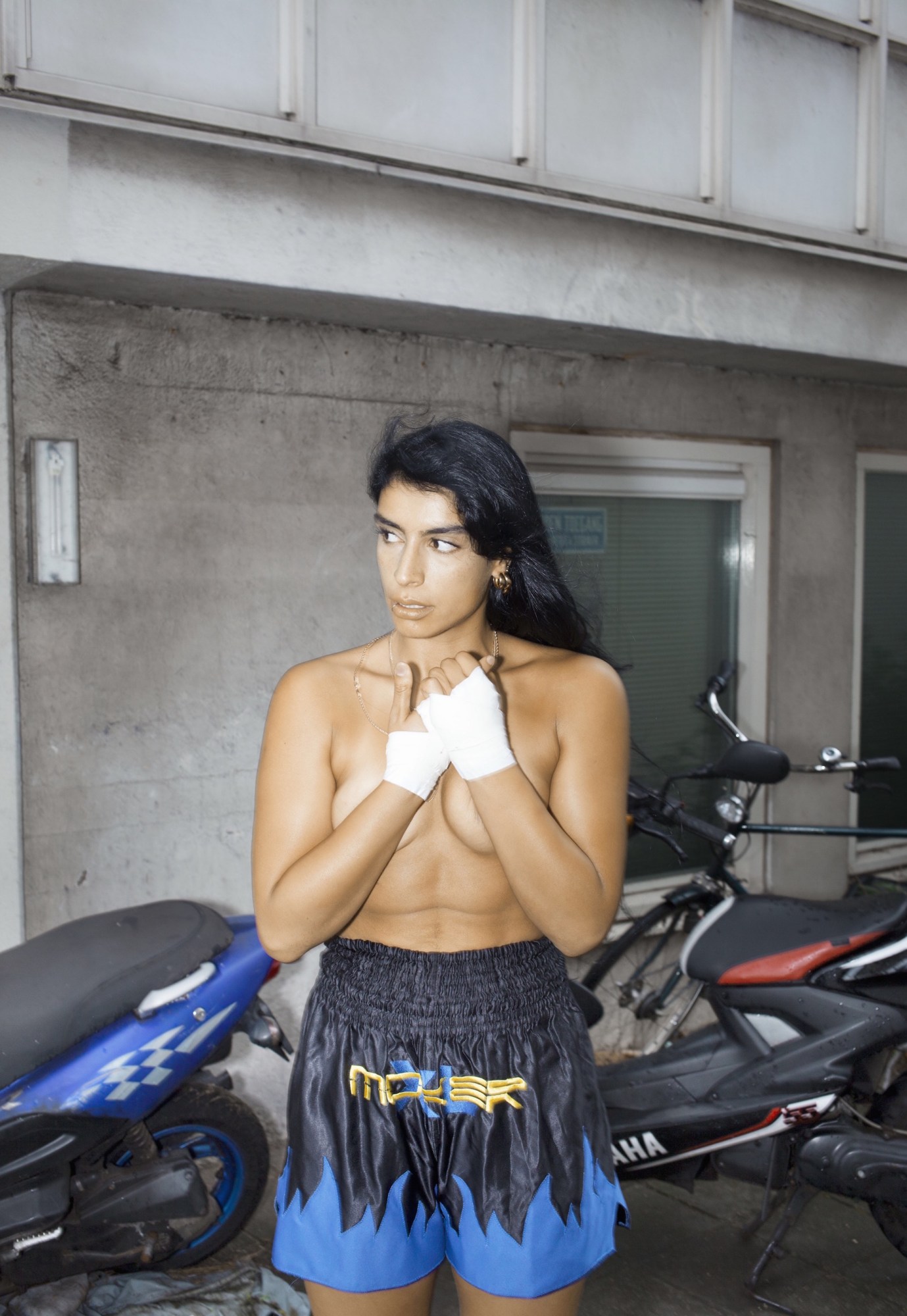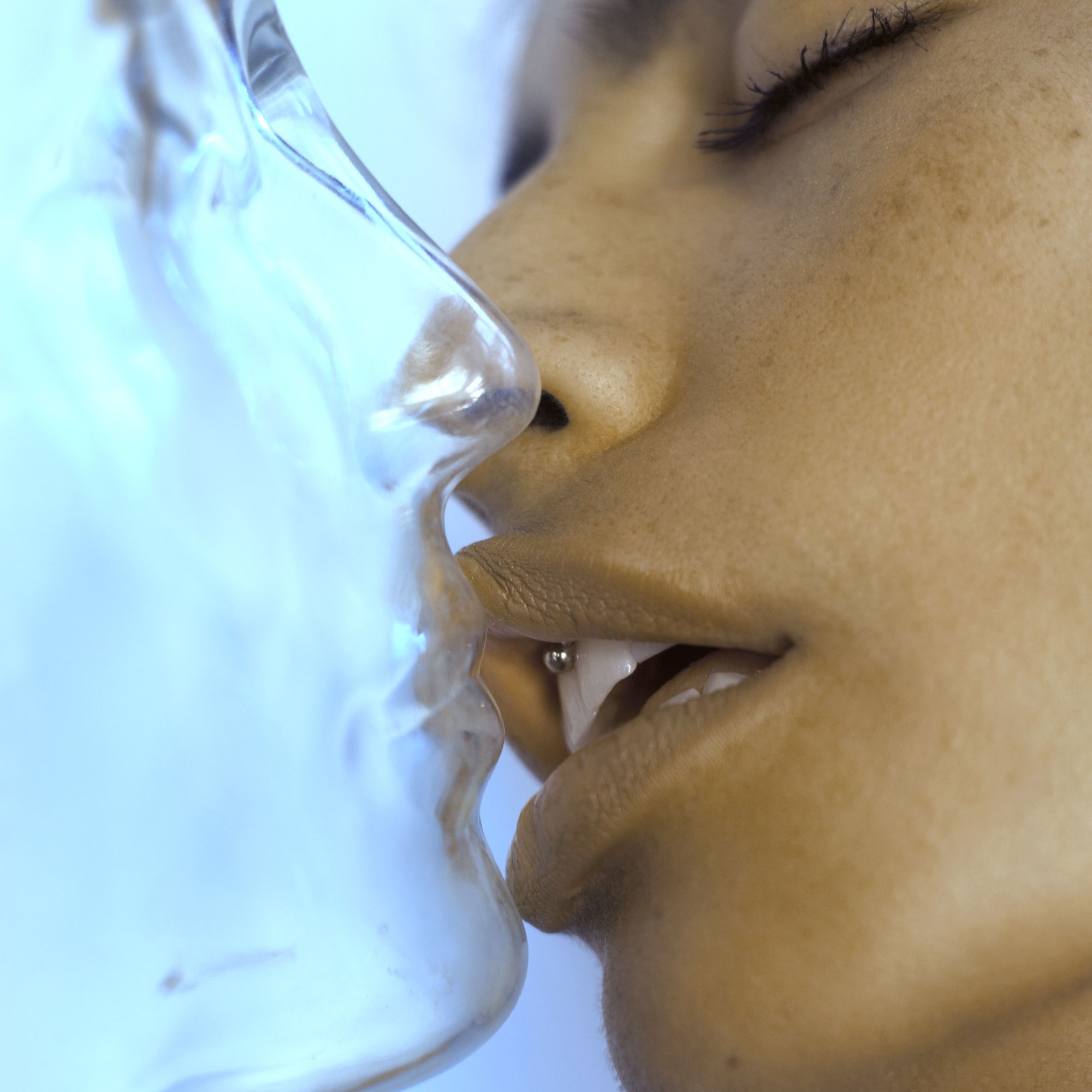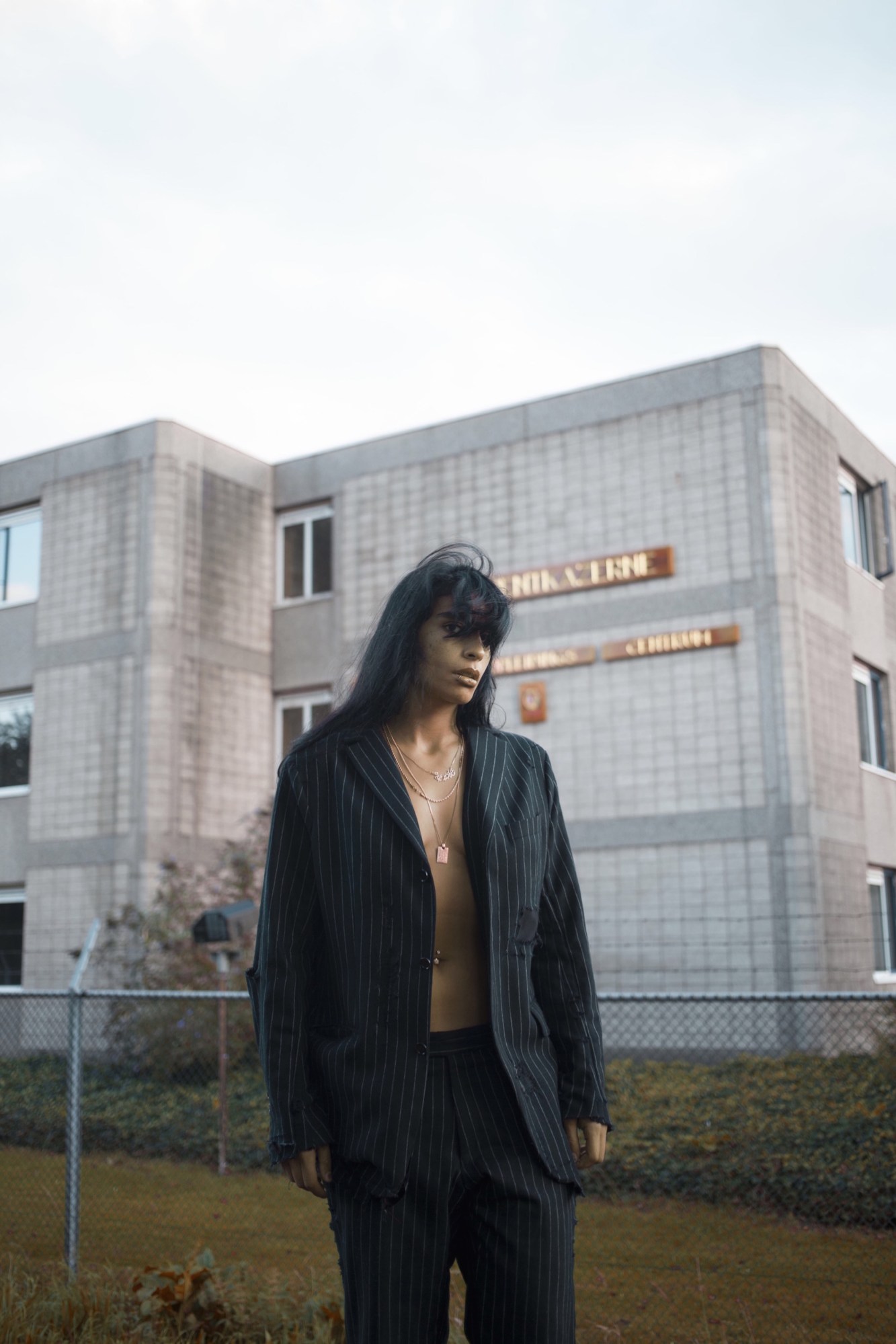Iranian-Dutch singer, songwriter and producer Sevdaliza is an enigma. In her recent split-screen video for “The Valley,” she appears as six different women—she wears black lipstick and a latex halter dress on the right side of the screen and a coquettish smile with shiny gold nipple pasties on the left, then becomes kittenish in neon streetwear, indifferent in gold bangles and a headscarf, dominant in leather bondage lingerie, and insecure in a pale turquoise swimsuit and fuzzy pink cowboy hat. So which one is the real Sevdaliza? Your guess is as good as hers. “Who am I to conclude who I am?” the 28-year-old wrote in a post on Facebook. “I am solely a student of life, an instrument of perception, I’m anything you want me to be.” Her seductive vocals and electronic textures are just as obscure, and could be described as downtempo, industrial, experimental or none of the above. She puts out new music with cryptic descriptions—for example, she explained her single “Marilyn Monroe” as “a portrait, in shimmering polyrhythms, of a tear floating down the cheek of a disappointed woman.” This week, Sevdaliza will release Children of Silk, an EP that features four new haunting and esoteric tracks, which she explains with six opaque instructions, including, “Do not kill it with gloves of silk for they will only soothe it.” But even though she and her music are open for interpretation, there are two things we know for sure: We are captivated by the dark-haired siren, and want to know more.
When were you first interested in music? When did you start making your own?
When I was little, my parents fled our country. If it wasn’t for the relocation, I wouldn’t even have the privilege of free expression. I can sit and listen to music for hours. My life is my soundtrack. It’s intuitive; at some point, music just started to draw me in completely. I started hearing my own melodies and just followed the music to see where it would take me. I could try to make myself do other things, but I prefer to really be and let what I do speak for itself. I am an autodidact, so I taught myself everything by simply practicing. I think that’s the only way of really doing it for me, is to feel the music inside.
On Twitter you wrote, “I am not skinny, I am not Caucasian, I am not rich, my parents aren’t famous, but somehow I am succeeding in a world that doesn’t want me to.”What has been your experience been like as an Iranian woman in the music industry and in The Netherlands?
In a world where class, gender and money hand out most of the rules, I have a lot going on against me. But I think passion and love for what you do really overcomes all that. Why quit? I am here anyway, and given this time, so I’ll try to make the best of it.

We loved your music video for “That Other Girl.” How did you come up with the idea for that video? What were the references and inspirations for it?
I don’t want to ruin the idea of the viewer, so I’ll keep it modest. Basically, I had this tremendous “perfect” world inside of my head, and wanted to bring that to life. The rest is up to people’s perception of what they want to see in it. I like to be surprised by that.
I read that you get a lot of inspiration from paintings. What fine artists are you inspired by?
Artists that never deviate from their personal vision. Artificial realism in visuals triggers a very direct, intrinsic part of my brain. It’s a realistic representation of something quite impossible. Artists like George Condo and illustrators like Moebius, who don’t pursue a piece platonically. I want to feel like I’m crawling inside the mind of the creator. I get a lot of inspiration from my direct environment as well. For instance Zahra Reijs, a photographer, and Alexander Shaw, who is an amazing painter, happen to be close friends. I experience their work as emotionally intense and inspirational because I am able to redirect and imagine the process in each of their minds; to then witness the outcome of something is truly magic.
Tell me about your tattoos. What are they and what significance do they have for you?
All my tattoos are self-portraits. They are like a living diary imprinted in my skin, a travel through time in self. Every portrait reflects a certain period or state I was in at the time. It’s good to remember where you come from.

How would you describe your new EP, Children of Silk?It’s close to who I am today—and this constantly changes, it evolves. I am not the same person as I was yesterday; I am different in every situation. That reflects in what I create. I try to avoid preconditioned labeling, writing and creating. Have a listen, and maybe you will know better what it is about
Which themes do you find yourself returning to over and over again in your lyrics? Why do you think that is?
I have very vivid, almost lively experiences imagining other people’s lives. I write about that often. I also have a lot of belief in the capability of a human being’s mind and find intuition and perception very interesting subjects. I love to write about human beings in general because we are so immensely complex, yet so stupidly predictable at times.
What’s next for you?
You tell me.

Credits
Text Zio Baritaux
Cover artwork by Hirad Sab
Photography by Zahra Reijs
